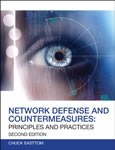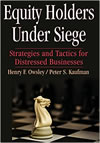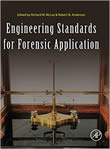All Articles
Accounting
Injury
Alcohol, Tobacco & Other Drugs
International Trade
Anger Management & Related Issues
Law Enforcement
Animals
Life Expectancy - Life Care Planning
Archaeology - Archeology
Linguistics
Artificial Intelligence (AI) / Machine Learning (ML)
Manufacturing
Attorney Fees
Market Research
Audio Forensics
Marketing
Business Management
Medical - Medicine
Chemical Industry
Mining
Cosmetology: Hair / Makeup
Nursing
Elder Abuse
Pharmacy & Pharmacology
Electrical - Electrocution
Plastic / Reconstructive / Cosmetic Surgery
Elevators - Escalator - Automatic Doors
Politics
Energy - Utilities
Premises Liability
Environment
Professional Malpractice
Expert Witnessing
Psychiatry
Food & Beverage
Risk Management
Foot / Ankle Surgery
Sexual Abuse - Molestation - Harassment
Foreign Affairs - Geopolitics
Slip, Trip & Fall
Forensics
Speech-Language Pathology
Healthcare Facilities - Hospitals
Taxation
Hotels & Hospitality
Telecommunication
Human Factors
Underwriting
HVAC - Heating, Ventilation, Air Conditioning
Yoga
More...

FALL-PROTECTION-SOLUTIONS-CONFINED-SPACES-SAFETY-ARTICLES-PAGE ARTICLES MAIN PAGE
. Contact Us if you are interested in having your work published on our website and linked to your Profile(s).
All Articles
Accident Investigation & Reconstruction
Hotels & Hospitality
Alternative Dispute Resolution (ADR)
Human Resources
Animals
HVAC - Heating, Ventilation, Air Conditioning
Aquatics Safety
Industrial Hygiene and Safety
Archaeology - Archeology
Intellectual Property
Arms - Guns - Weapons
International Trade
Automotive - Vehicular
Internet Marketing
Banking
Land Use
Business Consulting
Law Enforcement
Corrosion
Market Research
Counseling
Obstetrics - Gynecology (OBGYN)
Discovery & Electronic Discovery
Patents
Domestic Violence
Pharmaceuticals
Economics
Plants & Trees
Education & Schools
Plastic / Reconstructive / Cosmetic Surgery
Electrical - Electrocution
Police Practices & Procedures
Employment
Pools and Spas (Recreational)
Ethics / Ethical Duties
Professional Malpractice
Failure Analysis
Radiology
Feng Shui
Spirituality
Fires & Explosions
Telecommunication
Foot / Ankle Surgery
Terrorism - Homeland Security
Forensic Analysis
Toxicology
Forgery & Fraud
Transportation
Healthcare
Underwriting
More...
Featured Articles
There are no active articles here at this time. Please use the search bar, try another category, or contact us if you would like to contribute an article.
This Article is unavailable. Contact Us
Search articles by title, description, author etc.
Sort Featured Articles
Featured resources
Network Defense and Countermeasures:...
by Chuck Easttom
Equity Holders Under Siege
by Henry F. Owsley, et al
Engineering Standards for Forensic...
by By Richard N. Anderson (Editor) & Richard W. Mclay (Editor)
Follow us










